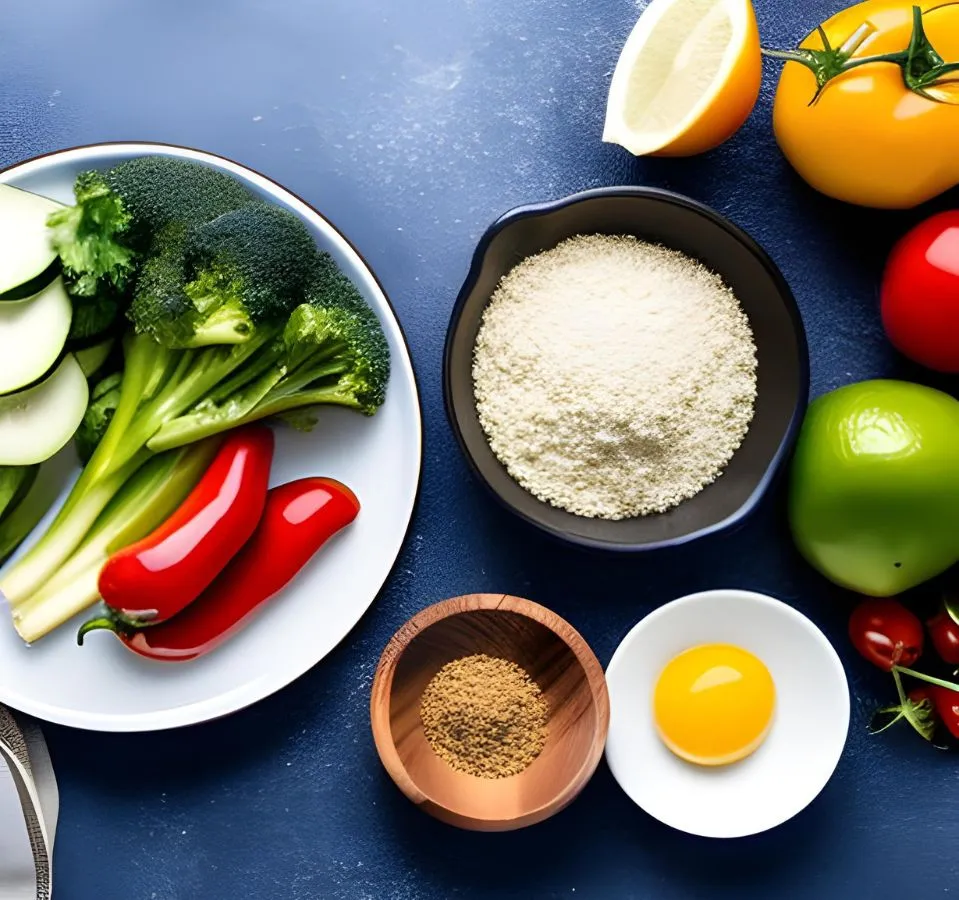
Kitchen Guide for the Home Cook
Table of Contents : Make your reading easy
ToggleCooking for yourself for the first time
Looking to improve your healthy cooking skills? How to cook food? What is cooking for you? Reasons to cook at home? Check out our kitchen guides for the home cook! Each guide covers a specific topic, from how to choose the right kitchen tools to how to make the perfect omelet. Whether you’re a beginner or an experienced cook, our guides will help you get the most out of your cooking.
The Basics of Cooking Meat
When it comes to cooking meat, there are a few basics that you need to know. First, you need to know how to cook the meat to the correct temperature. Second, you need to know how to make sure that the meat is cooked through. Third, you need to know how to make sure that the meat is tender. Fourth, you need to know how to make sure that the meat doesn’t contain any harmful bacteria. Finally, you need to know how to make sure that the meat doesn’t contain any allergens.
You must know about the Basics of Cooking Meat
1. Make use of a meat thermometer.
To cook your meat to the proper temperature, use a digital meat thermometer.
2. Select an appropriate cooking method: dry direct heat or wet indirect heat.
Searing, grilling, and roasting Alternatively, steaming, boiling, or braising. Chef Yankel’s advice for understanding which procedures to employ is broken out in the video. Check out the guide to common cuts of beef and how to prepare them.
3. Season the meat
Meat’s best buddy is salt. You can’t go wrong with salt and pepper, but you can also blend it with spices, use it in a marinade, or use it in a rub. We think coarse kosher salt is idea.
4. Season with searing.
Browning the meat is what gives it that delicious flavor.
5. Cooking afterthoughts
Rest the meat to allow it to cook evenly. For the most delicate taste, slice the meat perpendicular to the grain.
The Basics of Cooking Vegetables
We all know that vegetables are one of the most affordable and easy-to-use pieces of cuisine around. That’s why cooking vegetables is a great way to get your hands on some healthy food items that will help you live a more comfortable life.
Cooking vegetables is a simple process that can be done in a variety of ways. Here are some tips on how to cook vegetables:
Select the appropriate vegetables: You must choose fresh, frozen, or canned vegetables.
Select the appropriate cooking method: steaming, roasting, or stir-frying but the easiest method is boiling them in water. This method works well for most vegetables, but some require other methods. For example, broccoli needs to be steamed or stir-fried. Other vegetables like carrots need to be roasted or sautéed.
Select the appropriate seasoning: salt, pepper, olive oil, or garlic.
Select the appropriate cooking time: 10-15 minutes, or until tender.
The Basics of Cooking Fish
If you’re new to cooking fish, there’s no need to worry. It’s not as difficult as people think. In fact, it’s easier than cooking meat because you don’t have to worry about grilling or searing. Then add salt and pepper to taste.
Cooking fish is a great way to enjoy a healthy and tasty meal. Here are some tips to help you cook fish successfully.
1. Bake
- Preheat the oven to 450°F.
- Coat a baking sheet or small baking dish with nonstick cooking spray.
- Season the fish and place it on a baking pan in a single layer.
- Bake uncovered for 10 minutes per inch of thickness, or until the fish is cooked through.
2. Sauté or sauté in a pan
This approach produces crisply tender food. Fish fillets, shrimp, bay scallops, and slipper tails are the best seafood for this approach. Firm fish, such as cod or halibut, can also be stir-fried in strips.
- In a nonstick skillet, heat 1/4-inch oil or butter over medium-high heat.
- Fish can be breaded after being dipped in milk or beaten egg.
- Cook the fish for 4 to 5 minutes per side (per inch thickness), or until done.
3. Broil in a pan
- Thicker pieces, at least 1 inch thick, are ideal to avoid overcooking the fish.
- Baste the fish before and while cooking.
- On an oiled broiler pan, broil 3/4 to 1-inch thick fish 4 inches from the heat source.
- Broil the fish for approximately 8 minutes per inch of thickness, with the oven door slightly ajar.
- Turn fish that are less than 1 inch thick. As the top browns, the bottom and inside will cook.
- Broil bigger fish 5 to 6 inches away from the heat source, and thinner fillets 2 inches away.
4. microwave
- Almost any boneless fish fillet or steak can be microwaved.
- Nonstick cooking spray a microwave-safe dish.
- Cut the fish in half and place on a dish so that the thick center parts are on the exterior of the dish. Place in a single layer with a little liquid.
- Wrap with plastic wrap. Make some vent holes in the wrap.
- Cook the salmon for 3 minutes per pound on high power, flipping once.
- After cooking, season with salt.
5. Grill
- Thicker fish steaks (tuna, salmon, halibut, or swordfish) grill better than leaner fish. Make use of a clean, greased, and closely spaced grill grate. A fish grill basket will produce the finest results for smaller fish.
- Heat the charcoal for 30 minutes or the gas grill for 10 minutes on high with the lid covered. Build a fire or heat the grill on one side alone for indirect heat.
- Brush generously with oil the grill grate to prevent fish from sticking; the grate should be 4 to 6 inches from the heat source.
- Arrange the fish in a single layer on the grill rack.
- Cook the fish for 4 to 6 minutes each side (per inch of thickness) over medium to medium-high heat, or until done.
- Place the fish on the grate over the cold side of the grill and cook for 15 minutes with the lid closed. Alternatively, sear the fish on the grate over high heat before moving it to the cold side of the grill to complete cooking.
- Place a grill surface thermometer on the grate or use the hand-count method to determine temperature: Hold your palm just over the grate at cooking height. If you draw away in 3 seconds, the heat is medium-high (425°F grill surface temperature); if you pull away in 4 seconds, the heat is medium (375°F).
6. Poach
- Almost any fish can be cooked gradually in a hot liquid like wine, water, fish stock, or milk.
- Pour just enough liquid to completely cover the fish.
- Cook the fillets slightly below the boiling point in a firmly covered pan.
- Cook for 8 to 10 minutes for fillets and 15 to 20 minutes for entire fish.
- The poaching liquid may be used to make a sauce
7. Fry in deep fat
- This procedure works best with fish that is 1/2-inch thick. To guarantee optimal cooking, use a candy thermometer to monitor the temperature of the oil: Food will get soggy and greasy if the oil is too chilly while cooking; if the oil is too hot, the food will become too dark or charred on the outside before the interior reaches the right temperature.
- Heat enough vegetable or canola oil to 350 to 375°F, or until the fish floats when done.
- Thicker fish should be cut into smaller parts so that it can cook in the time it takes to brown.
- Lightly coat the fillets with flour. Dip into the beaten egg. Coat with your preferred breading.
- Cook for 3–5 minutes, or until gently browned.
- While cooking, keep the pieces apart. This may generate steam, resulting in a “soggy” covering.
- Before serving, pat dry with a paper towel.
The Basics of Cooking Desserts
When it comes to dessert, there are a few basics that every cook should know. This includes understanding the different types of desserts and how to make them successfully.
- First, there are two main types of desserts: sweet and savory. Sweet desserts typically contain sugar, while savory desserts use spices or other flavors to add flavor.
- Second, every dessert requires a certain type of sweetener. These include sugar, honey, maple syrup, agave nectar, and brown sugar.
- Third, every dessert requires a certain type of flour. These include all-purpose flour, whole wheat flour, and almond flour.
- Fourth, every dessert requires a certain type of ingredient. These include eggs, butter, cream, baking powder, and vanilla extract.
- Finally, every dessert requires a certain type of pan. These include a 9×13-inch pan, a 9×13-
What is the significance of dessert preparation?
Their presence on the menu makes us feel full after eating and compensates for low blood sugar levels. The urge to brighten your mood by consuming sweets might also play a role. Sweet foods stimulate the synthesis of the so-called happy hormone. Your behaviors are also very significant.
The Basics of Cooking Poultry
Cooking poultry is a great way to prepare a meal quickly and easily. There are a few different ways to cook poultry, and each method has its own benefits. Here are the basics of cooking poultry:
- -Select the right bird: Whole, cut-up, or parts?
- Preheat the oven: If you are cooking a whole bird, you will want to preheat the oven before placing it in. If you are cooking cut-up birds, you will want to heat up the oven before adding them.
- Season the bird: Before cooking the bird, add salt and pepper to taste. You can also add herbs, such as rosemary or thyme, for additional flavor.
- Roast the bird: The simplest way to cook poultry is to roast it in the oven. Place the bird in a preheated oven and roast for approximately 20-30 minutes, or until the bird is cooked through.
- Broil the bird: Another way to cook poultry
- What is Broil?
Broil is a cooking method that uses direct heat to cook food. The food is placed on a metal or wooden grate over a medium-high heat. The heat from the flame cooks the food quickly on both sides.
FAQ
Is there an app that tells you what to cook?
SuperCook is one of the most effective techniques to prevent food waste at home. It finds recipes that make the most of your ingredients, so nothing goes to waste. SuperCook makes food waste prevention entertaining and easy; simply visit the app’s menu page and select a recipe.
How can I teach myself to cook at home?
Tips
- Establish a routine. Learning to cook well, like everything else, takes practise.
- Begin with the Fundamentals
- Maintain Simplicity.
- Expand Your Spice Collection.
- Purchase a Set of Pans.
- Check that your knives are sharp.
- Plan ahead of time.
- Cook in large quantities.
What are the 12 cooking skills?
- Taking inventory.
- Making a Delicious Sauce
- Making a hearty breakfast.
- Making Fancy Cocktails
- One-Pot (or Sheet-Pan) Dinners Save Time and Dishes
- Putting Homemade Salad Dressing Together.
- Meal Preparation
- Vegetables Roasted
- Properly Using a Knife
- Food Safety Basics
What foods should be in every kitchen?
- Olive oil, extra virgin.
- Greek yoghurt without added sugar.
- Olives in a can.
- The sea salt.
- Tomato sauce.
- Herbs that are fresh.
- Garlic.
- Mustard.
What are the basic cooking skills for beginners?
- Knife Techniques.
- Making the Ideal Stock
- Understanding the Five Mother Sauces
- How to Become an Egg Expert…
- Meat, poultry, and fish…
- Sanitation of vegetables.
- Making the Dough
Ejoo Writer
Meet Ejoo, a talented writer with a passion for all things related to smart homes and kitchen design. With years of experience in the field, Ejoo has a wealth of knowledge when it comes to creating efficient and aesthetically pleasing spaces that utilize the latest technology. Their writing skills are equally impressive, with a talent for crafting compelling content that engages and informs readers. Whether you're looking for tips on how to make your kitchen smarter or need inspiration for your next home renovation project, Ejoo is the perfect writer to guide you through the process with their expertise and creativity.

Kitchen Guide for Vegetarians
You May Also Like

5 personal hygiene rules in the kitchen
28 January 2023
How to Make Your Home Unique
25 January 2023


19 Comments
gate io
Your article helped me a lot, thanks for the information. I also like your blog theme, can you tell me how you did it?
gate.io
Your article helped me a lot, thanks for the information. I also like your blog theme, can you tell me how you did it?
iota al sat
Reading your article helped me a lot and I agree with you. But I still have some doubts, can you clarify for me? I’ll keep an eye out for your answers.
zoritoler imol
I enjoy the efforts you have put in this, regards for all the great articles.
Brett Blunden
You made a few nice points there. I did a search on the matter and found most folks will agree with your blog.
slot red tiger demo
You are a very clever individual!
advantplay demo
This website is my breathing in, real fantastic layout and perfect written content.
slot joker gaming sering jackpot
excellent issues altogether, you just received a brand new reader. What might you suggest about your submit that you simply made some days in the past? Any sure?
Playslot77
Enjoyed reading this, very good stuff, appreciate it.
Fastwin77
Wow! This can be one particular of the most useful blogs We’ve ever arrive across on this subject. Basically Wonderful. I am also an expert in this topic so I can understand your effort.
Betwing88
I have been surfing on-line more than three hours these days, but I by no means found any fascinating article like yours. It is pretty worth enough for me. In my view, if all web owners and bloggers made good content material as you did, the web will probably be a lot more helpful than ever before. “Dreams have as much influence as actions.” by Stephane Mallarme.
Sensaslot88
Some genuinely good information, Gladiola I discovered this.
gate.io
I may need your help. I tried many ways but couldn’t solve it, but after reading your article, I think you have a way to help me. I’m looking forward for your reply. Thanks.
bocoran hk
Hi there! Someone in my Myspace group shared this website with us so I came to take a look. I’m definitely enjoying the information. I’m bookmarking and will be tweeting this to my followers! Superb blog and fantastic style and design.
Inam Writer
Thank you very much for your kind words. Thank you for sharing.
บาคาร่าเว็บตรง
The next time I read a blog, I hope that it doesnt disappoint me as much as this one. I mean, I know it was my choice to read, but I actually thought youd have something interesting to say. All I hear is a bunch of whining about something that you could fix if you werent too busy looking for attention.
Smart Contract Deployment Tool
you’re really a good webmaster. The web site loading speed is incredible. It seems that you’re doing any unique trick. In addition, The contents are masterpiece. you’ve done a wonderful job on this topic!
live horse racing on tv today
You have noted very interesting details! ps decent web site.
newmax
This post post made me think. I will write something about this on my blog. Have a nice day!!